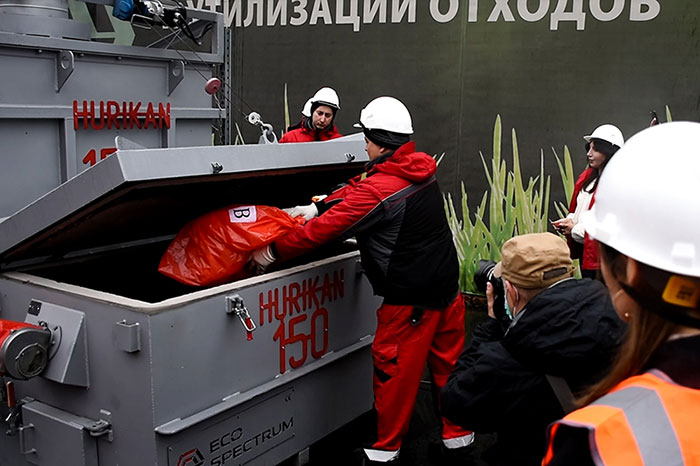Ваша заявка принята!
Наш менеджер свяжется с Вами
в течение 2 минут!
Рабочее время 8:00-17:00 (МСК)
An incinerator – is an equipment that specializes in the disposal and disposal of waste of various masses and nature. The main method used in the work is high-temperature decomposition. It is it that is optimally suited for the disposal of organic components with a different nature of origin. Further, in the secondary chamber, the formed gases are neutralized. The origin of the word is from French, and in the most accurate translation means "burning" or "stove to burn, melt." For the first time, such a word in this sense began to be used in 1520, which indicates the popularity and antiquity and provenness of the device.
Initially, the history of these devices lies in the household method - people accumulated waste, and because of the lack of a regular garbage collection system, they simply burned them. Positive domestic experience formed the basis of the industrial incinerator, which saw the world in 1876. It was patented by Alfred Fryer. Speaking about how the first device looked, it is worth noting the following nuances:
The first industrial incinerator was used exclusively for municipal waste.
The prototype of the modern device belongs to Horsfall, who made a model on a grate type. It was built in Bradford over 120 years ago and was very similar to a modern incinerator in principle: the waste did not fall into the furnace, but onto the grate that moved in the combustion chamber. This principle has proved itself positively due to the speed of combustion and the release of the optimal amount of gases, therefore it is still used today in municipal solid waste incinerators.
Incinerator plants vary according to the type of furnace they are based on.
Material loading is provided by a special device and the model stands out for its compactness. Its productivity is in the range of 50–200 kg/h. They can be additionally equipped with a stirrer mechanism so that the waste burns better.
The central drum mechanism is made in a horizontal form, where the waste falls automatically. The drum itself is slightly tilted to improve the quality of the combustion process. It is important that the temperature is maintained at 850-950 degrees.
It is considered the most effective device for the disposal of gaseous and liquid waste, because the volume is small, and the power is high. TB or other types of waste are fed into the cyclone reactor by a pump, where the temperature is about 1500 degrees. In case of formation of salts, they enter the decalcification chamber.
The most popular type of ovens, where the waste is sent to the grate layer that is spinning. Due to the movement of the grates, a better combustion is provided than in a hearth furnace.
It is used to disinfect silt-type sediments, in particular at sewage treatment plants.
It operates on the basis of a hearth type furnace and fully meets a number of characteristics for such mechanisms. They are specified in Resolution MEPC75/40 of 1997.

The main task of the installations is waste disposal. So, they are used not only in the work of utilities, but also in other areas:
It is indicative: there are practically no restrictions in the list of wastes that can be neutralized in such a thermal way. A significant advantage in the use of incinerators is the possibility of recycling waste in different aggregate states: liquid, pasty, solid and loose.
Yes, and they are spelled out by the European Parliament and the EU Council on Industrial Emissions. The main requirements spelled out in the document are not only the coordination of industrial emissions, but also the development of devices for more efficient and environmentally friendly combustion. In the Russian Federation, there are also certain emission restrictions regarding waste incineration. They are specified in the Order of the Ministry of Natural Resources and Ecology, adopted in 2019.
The company "Eco-Spectrum" has all the necessary permits and certificates, and also manufactures and supplies equipment for recycling for Russian and foreign customers.
We offer various types of incinerators with dry and wet gas cleaning systems for private and municipal enterprises at an affordable price with a guarantee. A professional approach will help you make the right and accurate choice.
Рабочее время 8:00-17:00 (МСК)
Рабочее время 8:00-17:00 (МСК)
Рабочее время 8:00-17:00 (МСК)
Рабочее время 8:00-17:00 (МСК)
Нажимая на кнопку, Вы даете согласие на обработку персональных данных.